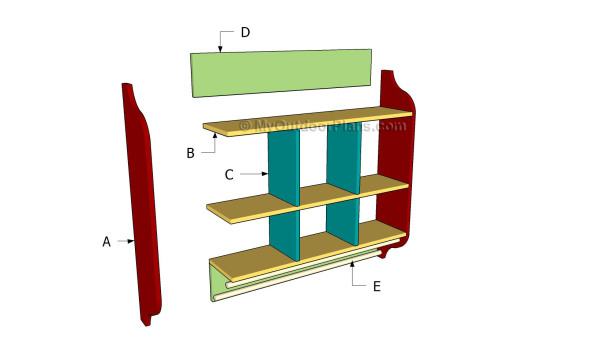This step by step diy woodworking project is about kitchen hutch plans. This detailed article features through plans for building a beautiful kitchen hutch. Work with good judgement and don’t forget to take a look over the rest of the related plans, as there are many designs and woodworking projects to select from.
Work with attention and don’t forget that a good planning will save you from many issues and it will keep the costs within the total budget. Invest in high quality materials, such as pine, redwood or cedar. Drill pocket holes before inserting the galvanized screws, to prevent the wood from splitting. Add waterproof glue to the joints, in order to enhance the rigidity of the structure. See all my Premium Plans HERE.
Projects made from these plans
Kitchen Hutch Plans
Cut & Shopping Lists
- A – 2 pieces of 1×10 lumber – 39 1/2” long SIDES
- B – 3 pieces of 1×10 lumber – 38 1/2″ long SHELVES
- C – 2 pieces of 1×10 lumber – 9 1/2” long, 2 pieces – 13 1/2″ long PARTITIONS
- D – 2 pieces of 1×8 lumber – 38 1/2″ long SUPPORTS
- E – 2 piece of 1×1 lumber (round) – 40″ long HANGERS
- 3 pieces of 1×10 lumber – 8 ft
- 1 piece of 1×8 lumber – 6 ft
- 1 piece of 3/4″ rod – 8 ft
- 2 1/2″ screws
- 1 1/4″ screws
- wood putty, wood stain
Tools
![]() Hammer, Tape measure, Framing square, Level
Hammer, Tape measure, Framing square, Level
![]() Miter saw, Drill machinery, Screwdriver, Sander
Miter saw, Drill machinery, Screwdriver, Sander
Time
![]() One day
One day
Related
Building a kitchen hutch
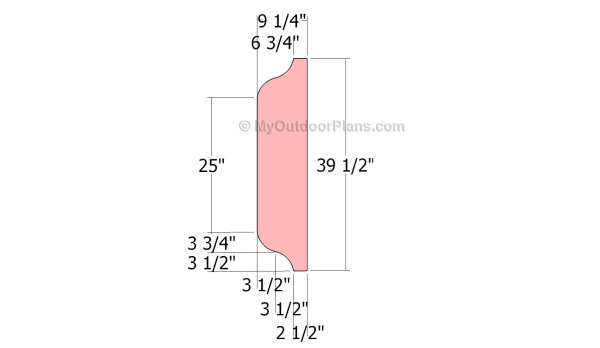
Building the sides
The first step of the woodworking project is to build the sides for the kitchen hutch. In order to get a professional result, we recommend you mark the cut lines on the 1×10 slats and to get the job done using a jigsaw. Smooth the cut edges with sandpaper and remove the residues with a damp cloth.
Make sure you work with attention, in order to draw the curved lines in a professional manner.
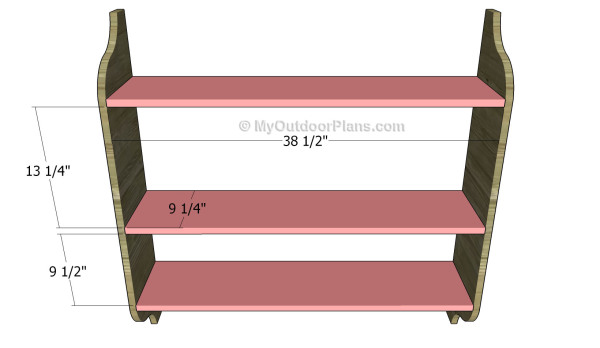
Fitting the shelves
The next step of the woodworking project is to attach the shelves to the structure. As you can easily notice in the diagram, we recommend you to build the shelves out of 1×10 lumber and to drill pocket holes at both ends of the slats. Fit the slats between the sides and secure them into place using 1 1/4″ screws.
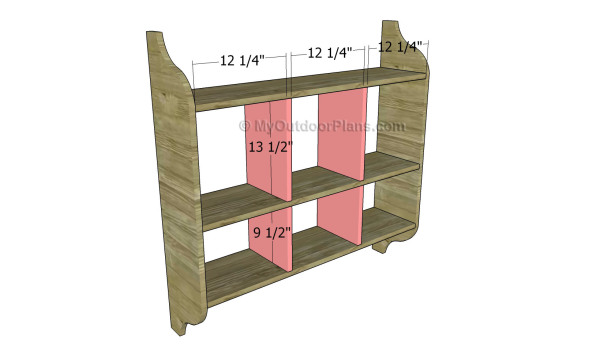
Fitting the partitions
Continue the project by fitting the partitions to the structure, as it can be seen in the diagram. Drill pocket holes at both ends of the components and fit them between the shelves.
Top Tip: Place the partitions equally-spaced and secure them to the shelves using 1 1/4″ screws. Make sure the corners are square and add glue to enhance the bond of the joints. Use a spirit level to make sure the shelves are horizontal and the partitions are plumb.
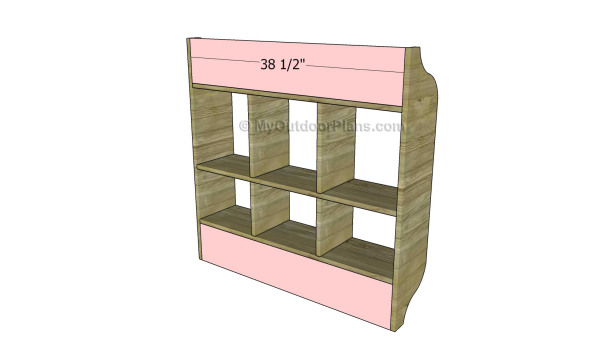
Attaching the back slats
After building the frame of the kitchen hutch, we recommend you to fit the slats to the back of structure. Drill pocket holes at both ends of the slats, fit them with attention and lock them into place using 1 1/4″ screws. Add glue to enhance the rigidity of the joints.
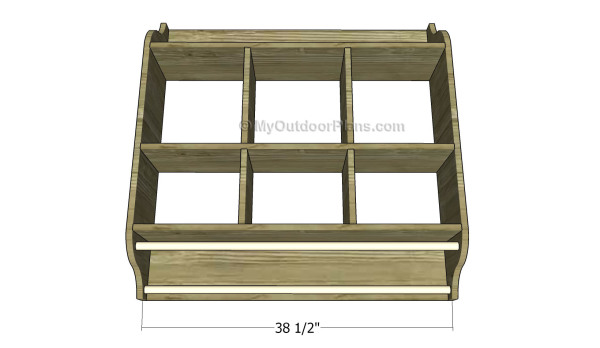
Fitting the hangers
Fit the wooden hangers to the bottom of the hutch, as descried in the diagram. In order to create a rigid structure, drill holes through the sides and fit the hangers. Add glue to lock them into place and remove the excess with a damp cloth.

Kitchen hutch plans
One of the last steps of the woodworking project is to take care of the finishing touches. Therefore, fill the pilot holes with wood putty and smooth the surface with 120-grit sandpaper.
Top Tip: If you want to enhance the look of the woodworking project and to protect the stand from decay, we recommend you to cover the components with paint or stain. Drill pilot holes through the back slat and insert 3 1/2″ screws into the studs.
This woodworking project was about kitchen hutch plans. If you want to see more outdoor plans, we recommend you to check out the rest of our step by step projects. LIKE us on Facebook and Google + to be the first that gets out latest projects and to hep us keep adding free woodworking plans for you.

